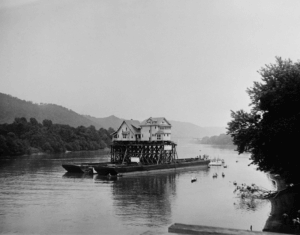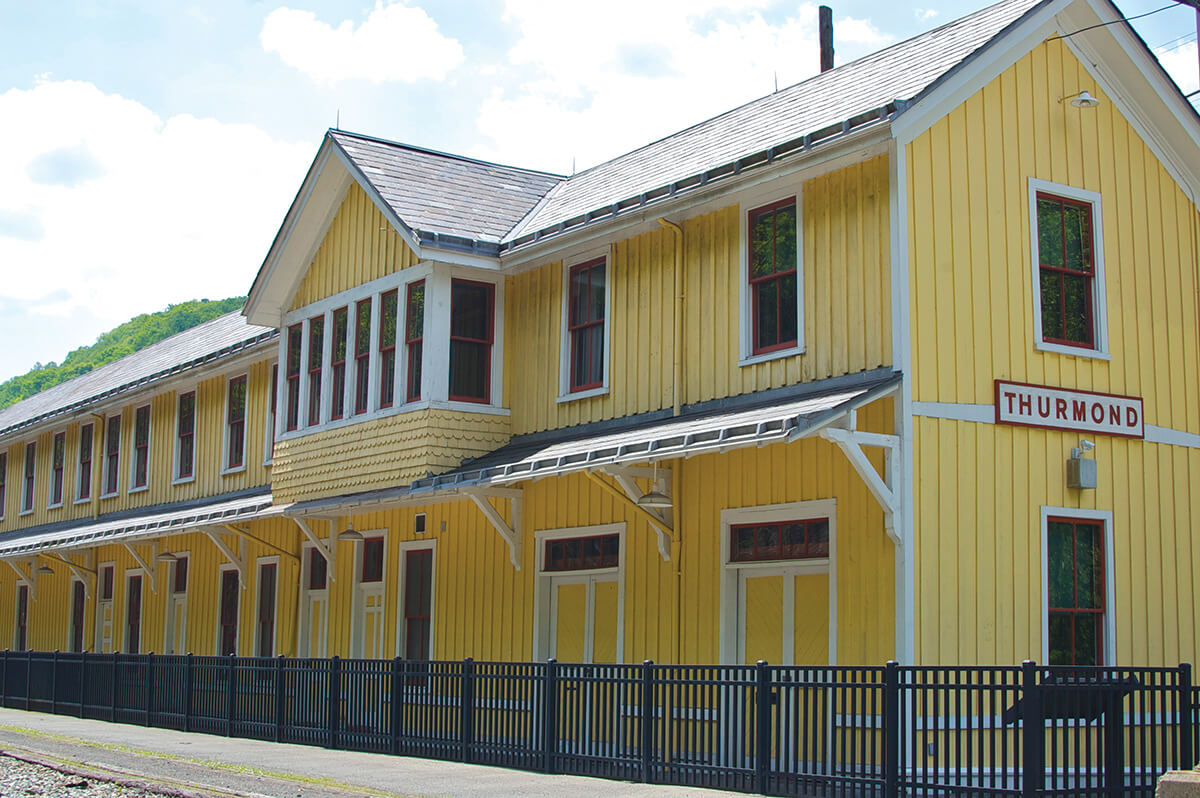
A time capsule, a ghost town, the heart of the New River Gorge—Thurmond in Fayette County is an experience like no other.
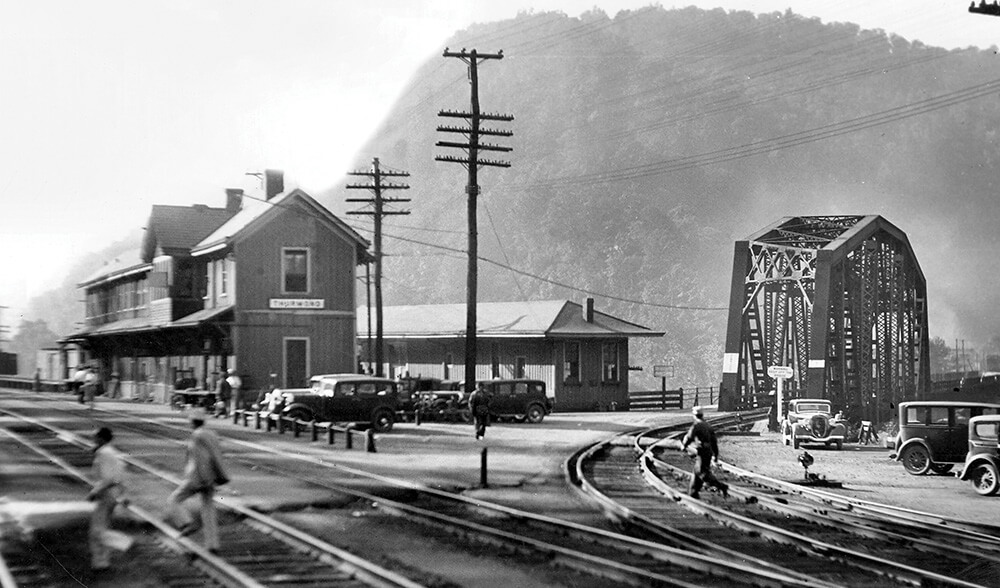
Paint a picture of Thurmond at its height and you’ll need a whole palette of colors—black for whistling train engines and piles of bituminous coal, white for clouds of steam and the rushing New River, red and blue for poker chips and playing cards, silver and green for banks and barons flush with boomtown cash. From the late 1800s to the early 20th century, Thurmond wasn’t just a stop on the river, it was a microcosm of the region’s changing economy. With the largest profits on the Chesapeake & Ohio Railway and the richest banks in the state, not to mention gambling, prostitution, and liquor, this tiny town attracted thousands every year.
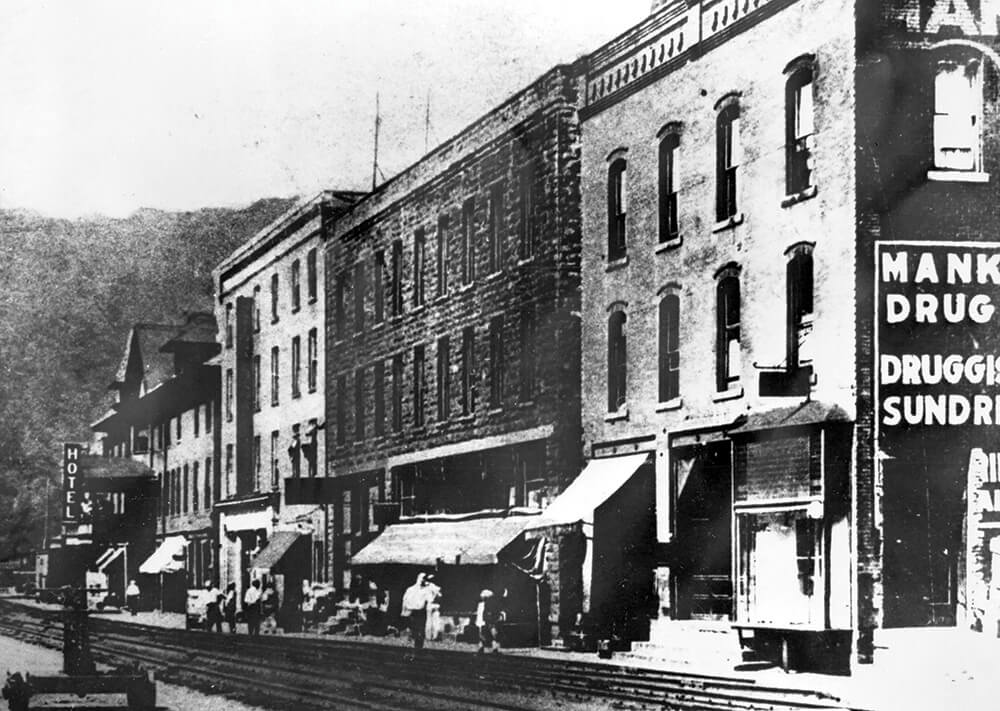
One hundred years ago traffic came and went by train and Thurmond was smack-dab on one of the busiest railway arteries in the nation. “In the early 1900s this was how every town started out,” says Leah Perkowski-Sisk, a ranger with the National Park Service who regularly works in Thurmond. “Thurmond was never just the end of the road.” Now the only way to get into town is a winding two-lane road too rough and tumble for RVs and trailers. “When people come to Thurmond today they tend to be shocked by how isolated it seems,” she says. “Yet it’s a whole different perspective when you think about people having to rely on the railroad for everything. Thurmond was much like all the other towns in the gorge and it was also like the rest of the country at the time.”
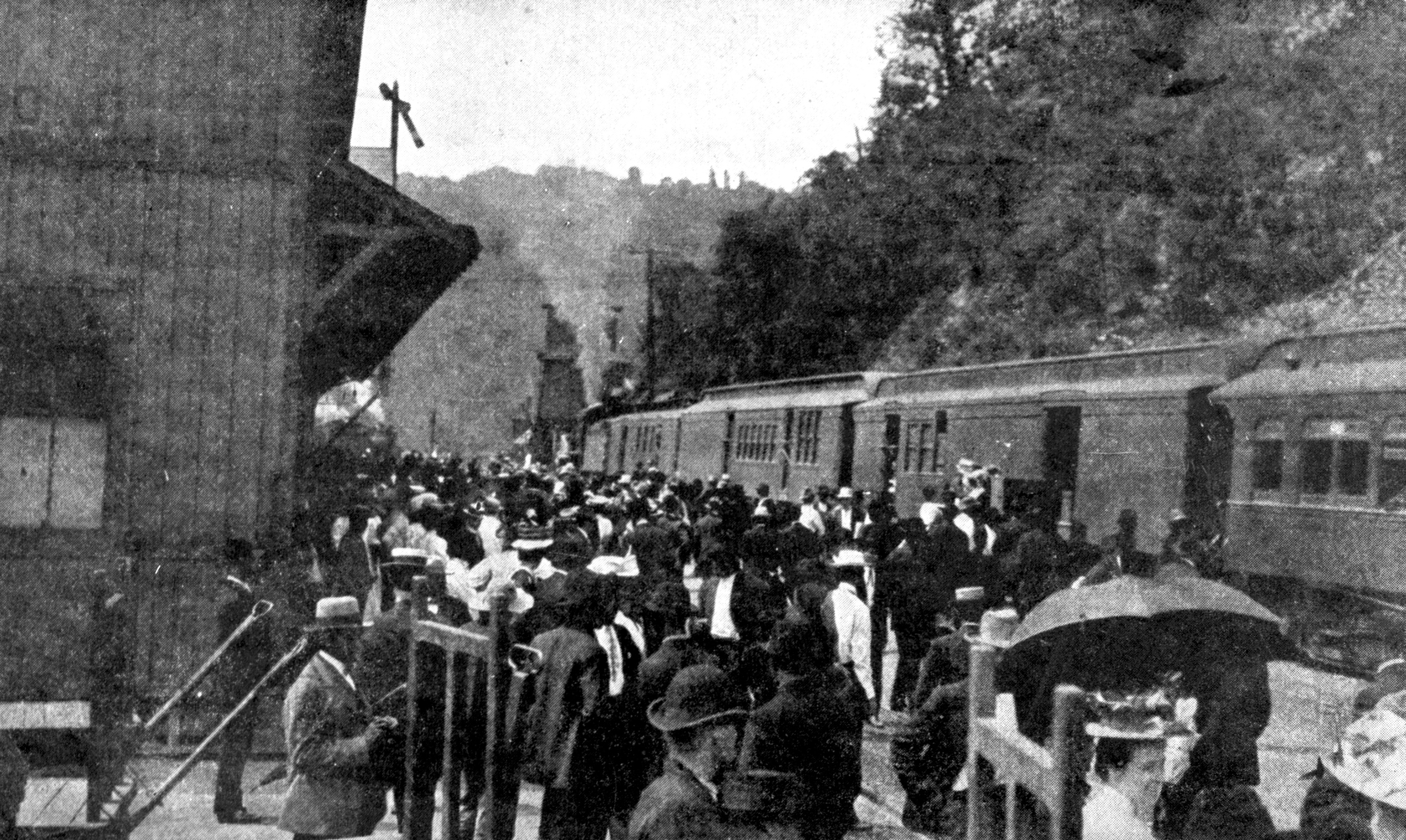
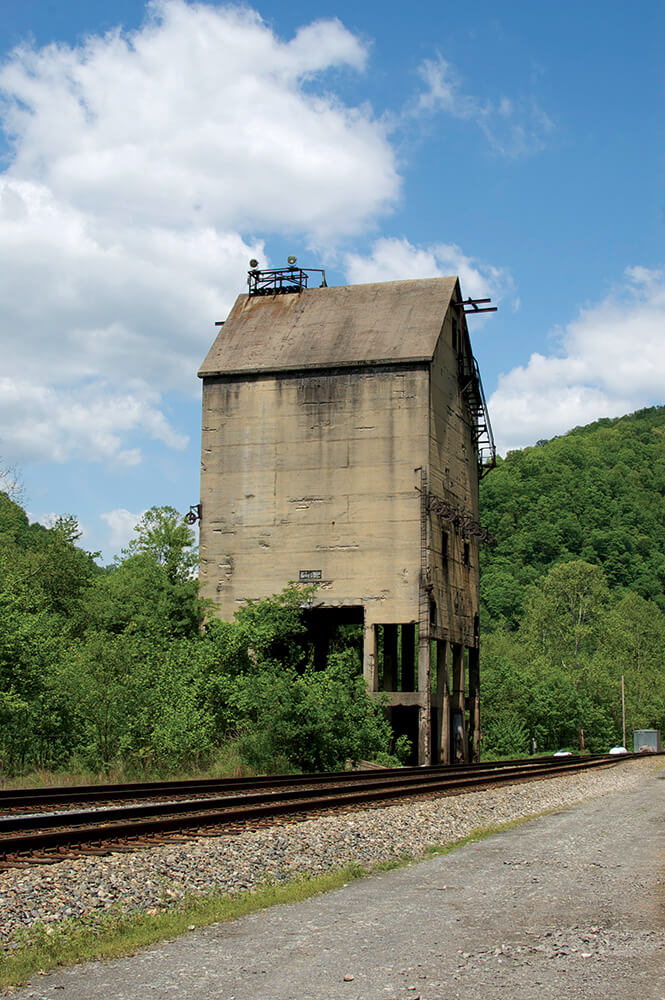 In 2015 Thurmond has less than 10 full-time residents and mostly caters to two crowds—railway enthusiasts and outdoor adventurers. Some of the town is now owned by the National Park Service, though a great deal of private land remains, and tourists still fill its peaceful streets with laughter as they watch trains rumble past. Although hardly monochrome in comparison to its colorful past, this tiny community is often called a ghost town, not just because of its population but because many of its iconic buildings are so well preserved they seem to stand frozen in time.
In 2015 Thurmond has less than 10 full-time residents and mostly caters to two crowds—railway enthusiasts and outdoor adventurers. Some of the town is now owned by the National Park Service, though a great deal of private land remains, and tourists still fill its peaceful streets with laughter as they watch trains rumble past. Although hardly monochrome in comparison to its colorful past, this tiny community is often called a ghost town, not just because of its population but because many of its iconic buildings are so well preserved they seem to stand frozen in time.
From their home on the river beside Thurmond, Cindy Dragan and her husband, Tom, sit on their back porch and watch eagles make lazy circles over the water. They say it’s wild to think of Thurmond 100 years ago. The husband and wife aren’t natives but they met on the New River near Thurmond, settled there in 1970, and raised a family. He was a river guide and she worked in tourism and marketing. They fell in love with the landscape, the cold rushing river, and the hush of the wind through the trees. “Thurmond was considered the middle of the river and the heart of white water rafting in the area, so we made it our home,” he says.
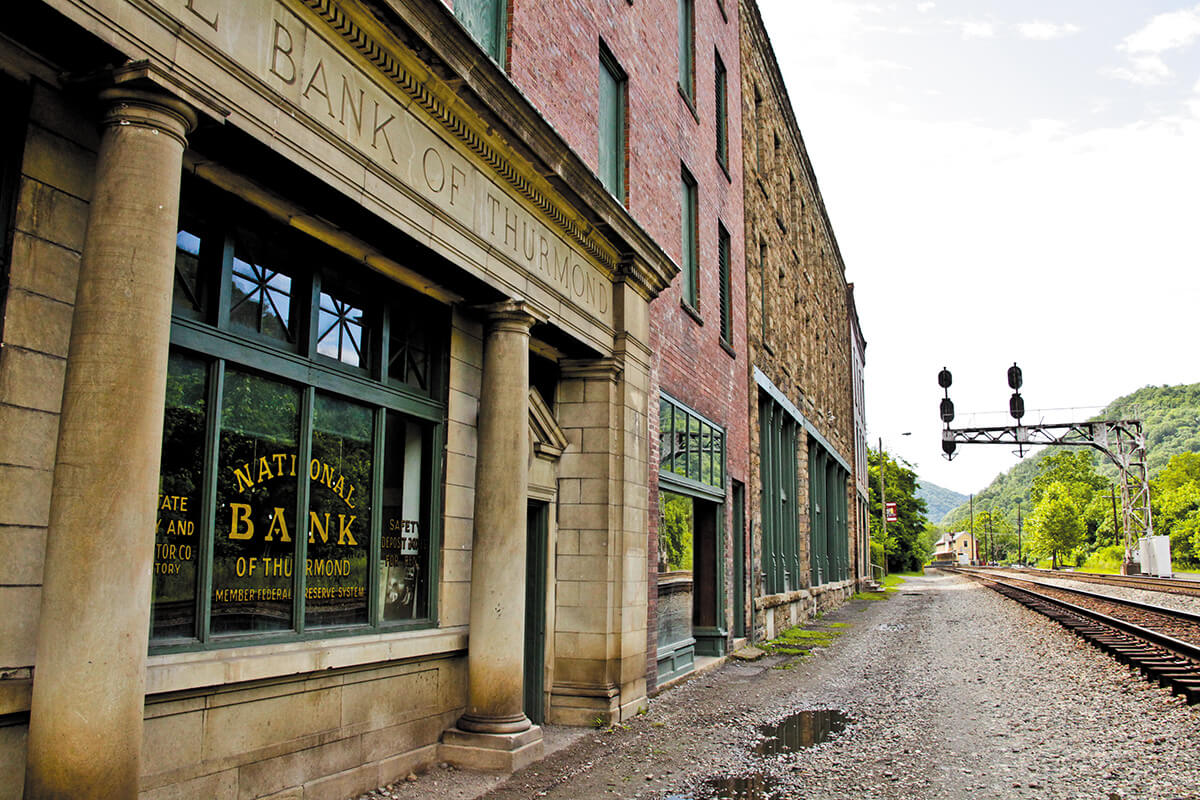
The town had already captured Tom Dragan’s imagination. He and his brothers opened the area’s first white water rafting center there in the late 1960s. Cindy Dragan was a bit harder to persuade at first. “It took him a little while to convince me to live here,” she says. “I grew up near Boulder, Colorado, so I wasn’t really from a small town. It was a totally different environment for me. When I first drove into Thurmond on that two-lane road it was beautiful, but I had to wonder if it was the end of the world.”
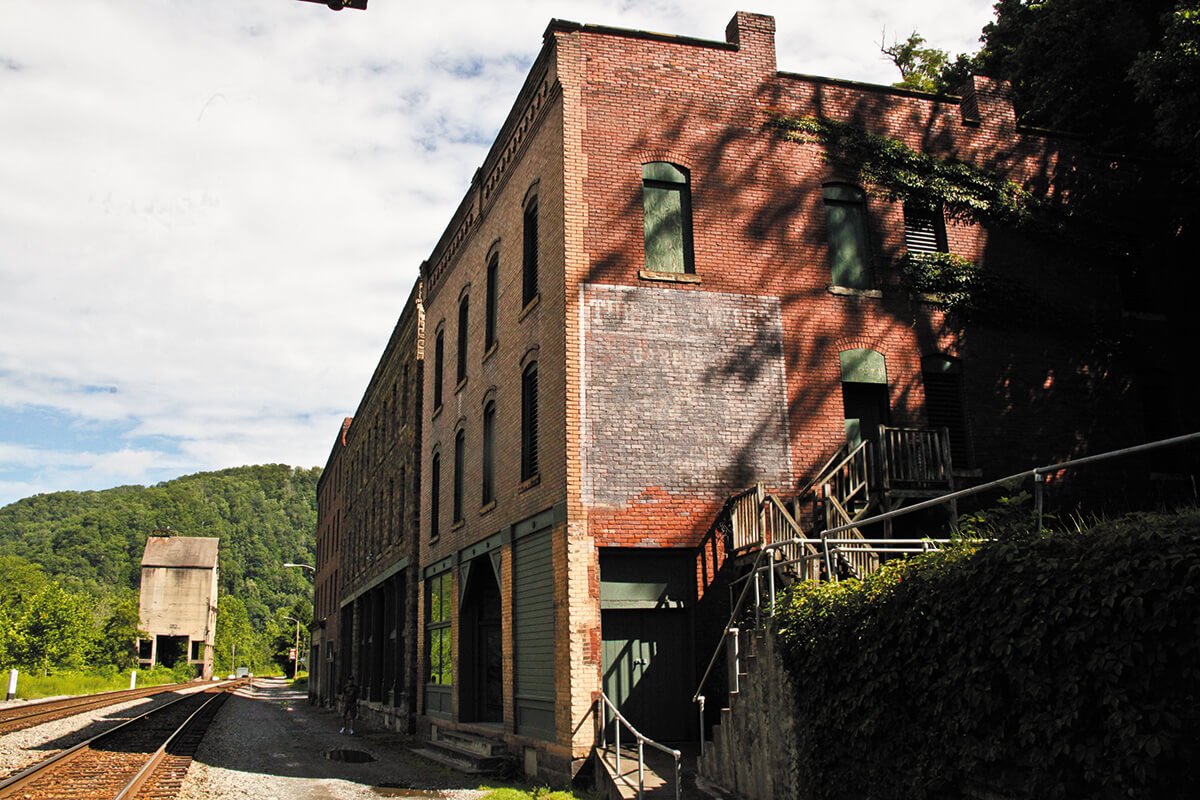
Thurmond’s founder probably wondered the same thing, though he had more of a utopian fantasy in mind. Sandwiched between Arbuckle and Dunloup creeks on the north side of the New River in Fayette County, Thurmond was never intended to be either the hotbed of 20th-century-style revelry or the ghost town that it later became. William Dabney Thurmond, Confederate captain, Virginia native, and devout Baptist, dreamed this 73-acre parcel—paid to him in lieu of wages from his job as a surveyor—would be the future sight of an idyllic community named Arbuckle in the 1870s. After settling there the captain got to work building houses for local miners and a hotel for travelers, one where no liquor or gambling would be allowed.
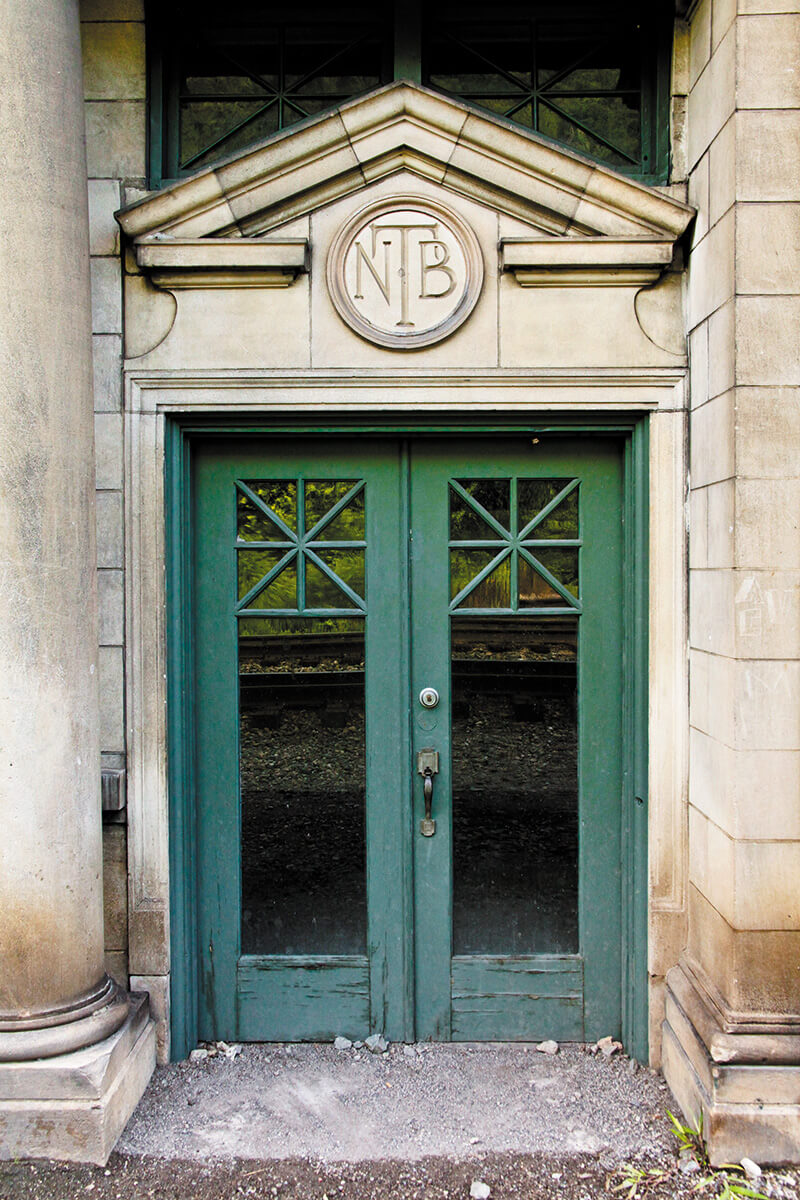
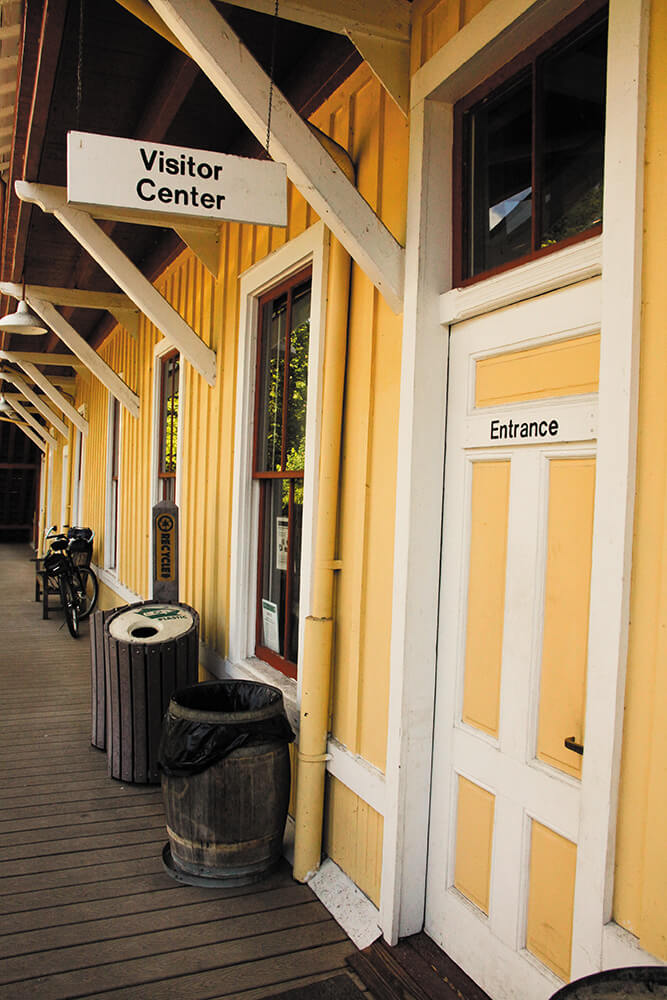
Things changed after the 1875 completion of the C&O Railway formed the town’s main street, bringing an influx of people unaccustomed to the captain’s austere lifestyle. Local landowner Thomas G. McKell even built himself and his fellow revelers their own hotel, called the Dunglen, across the river, one where gambling and liquor were quite welcome. Although the captain officially outlawed liquor in 1901 with the incorporation of his town, McKell would not be outdone. As the owner of the nearby town Glen Jean, he simply extended the boundaries of his community to include his hotel and the local entertainment industry continued to boom, spilling into Thurmond.
Were you a traveler on one of the 15 passenger trains stopping at the Thurmond Depot each day during the town’s peak, you’d have had your choice of two places to stay, the swanky Lafayette Hotel with 35 rooms, a veranda extending to the railroad tracks, and new-fangled technology like steam heat and electric lights; or the 100-room Dunglen Hotel, rumored to allow prostitution, dancing, and spirits of all kinds just across the river for $2.50 a night. They didn’t call Thurmond the wild west of the east for nothing. If you’d booked a room at the Dunglen, which locals called the “Little Monte Carlo,” you were probably looking to gamble. The hotel supposedly played host to a 14-year-long poker game.
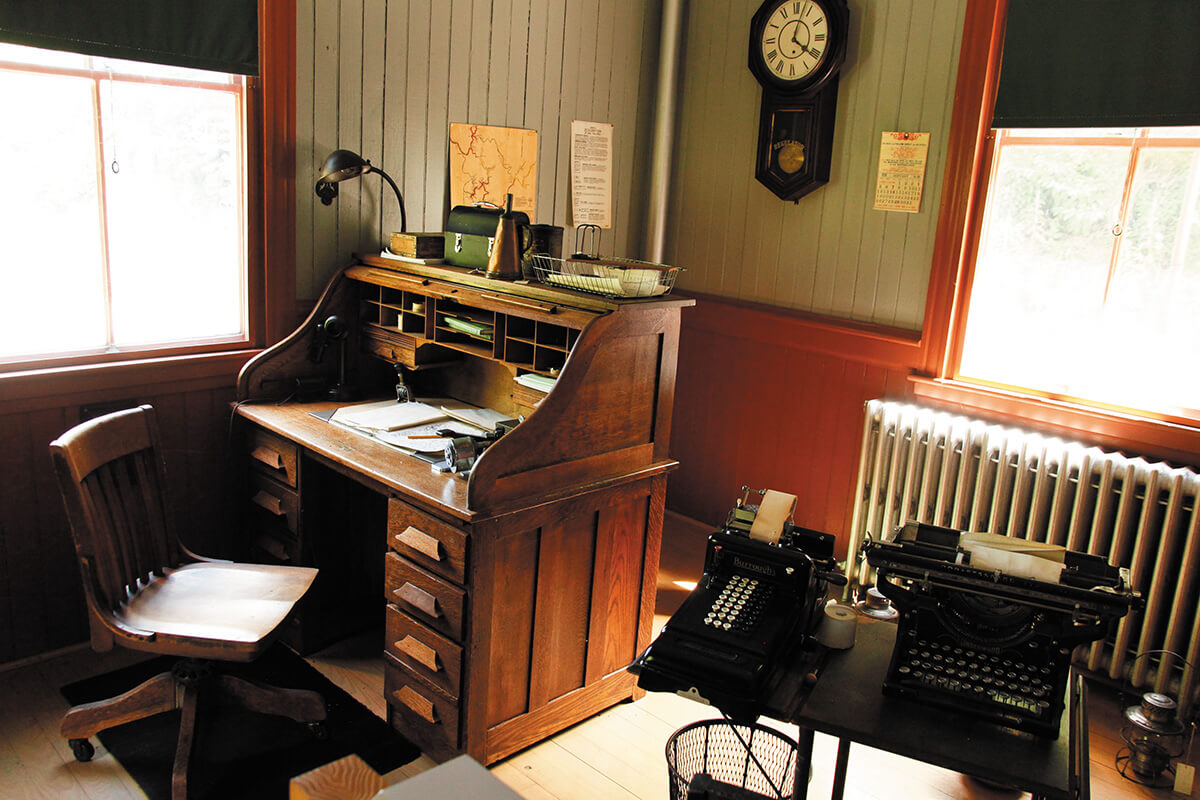 But there’s a reason boom and bust go hand-in-hand. When new competition rose up from the Virginia Railway, prohibition drained the town dry in 1914, and a major fire turned part of the community to ash in 1922, Thurmond headed for a decline almost before it took its first breath. The Great Depression and the switch from coal to diesel locomotives were the final nails in the coffin for this once boisterous tourist destination.
But there’s a reason boom and bust go hand-in-hand. When new competition rose up from the Virginia Railway, prohibition drained the town dry in 1914, and a major fire turned part of the community to ash in 1922, Thurmond headed for a decline almost before it took its first breath. The Great Depression and the switch from coal to diesel locomotives were the final nails in the coffin for this once boisterous tourist destination.
For the Dragans, like Captain Thurmond, the town is a magical place, a piece of history surrounded by awe-inspiring wilderness. More than 40 years after settling in Thurmond, Cindy Dragan says she’s blessed to call it home. “I can’t think of anywhere else I’d want to live,” she says.
Hundreds of tourists still find their way down that twisting road each year to watch the trains, wander around the museum and visitor’s center in the old depot, launch a raft on the New River, hike or bike the trails, or simply soak in the history. “Thurmond is one of those places that has so many sensational stories,” Perkowski-Sisk says. “But sometimes the basic history is what’s really neat. When you drive down there, it seems like a fairly isolated community, and it is by today’s standards. But in the early 1900s, it was very much a thriving place. Thurmond is beyond a glimpse into West Virginia’s past. It’s a glimpse into American history.”
Written by Mikenna Pierotti
Photographed by Carla Witt Ford





